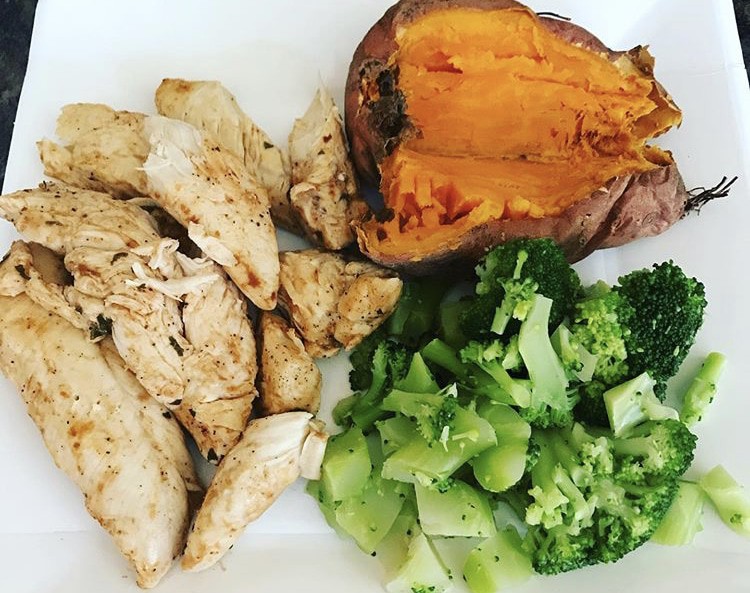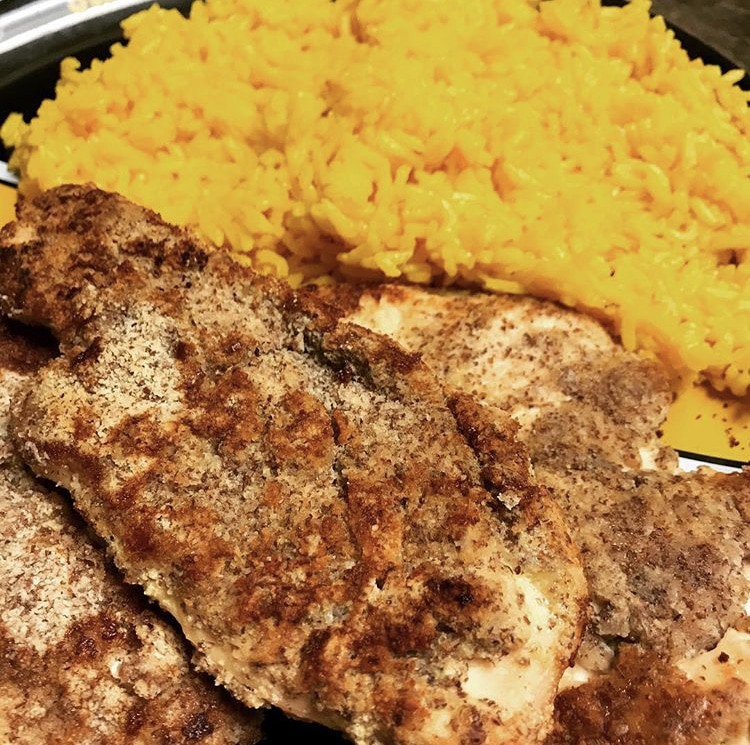
OMAD, or one meal a day, is one of the most restrictive forms of intermittent fasting. As the name implies, individuals on this particular diet only eat once per day. Obviously this meal is quite the feast, as it is intended to sustain a person for the next 23 hours. Since it is very difficult to get your daily caloric needs in one meal, this particular eating strategy is common for people looking to lose weight.
But what if you are looking to build muscle. Can you build muscle on an OMAD diet?
While it is not the optimal way to build muscle, it is still possible to gain muscle on a diet even as restrictive as OMAD. Muscle gain is brought about by an elevation in protein synthesis. The two best ways to increase protein synthesis are by resistance training and high protein meals. By timing both and choosing the right foods, you can optimize muscle growth on OMAD to the highest degree possible.
Benefits of OMAD
Preparing, cooking, and even eating food takes up quite a bit of time. An OMAD diet allows an individual to be more productive since they only have to worry about doing this once a day. Consuming your daily caloric needs in one meal also allows for a lot of freedom and flexibility within the diet itself. If you maintain your weight on 2500 calories, it would be very difficult to achieve that in one meal containing whole, minimally processed foods. Even at a caloric deficit where you may eat only 2,000 calories, it could still be tough.
As a result, you are free to enjoy some junk food or dessert if you choose to do so. These foods are highly palatable and contain a great deal of calories. One of the problems with many diets is compliance: resulting in people going on massive binges which derail their progress. The freedom to eat some dessert, fried food, etc. within the OMAD protocol may help with compliance. Allowing an individual to have some junk every day could prevent the urge to pig out all at once, which can not only lead to fat gain but also guilt and poor relationships with food.
Many people have no problem, or even prefer, to work out on an empty stomach. The stigma of doing so has long passed. You’re not going to faint or feel weak during training sessions if you don’t eat something prior. Diets like OMAD and intermittent fasting have shown that not only is it not bad to work out fasted, it may even increase performance for some individuals. This of course is highly based on personal preference.
How Muscle is Built
Muscle is built as an adaptation to strenuous resistance exercise. The body is a very adaptive system. If you work out hard enough and consistently, new muscle will be built. But the body must have a reason to grow. If your training stagnates, so will your rate of muscle development. This is why some people plateau after a year or two of training; they continue to do the same routine over and over.
Working out in of itself will increase protein synthesis (i.e. the buildup of proteins into new muscle), but you still need the raw materials necessary to build that muscle, which comes in the form of protein. Protein is unique compared to other macronutrients in that it is the only substrate that can build and repair muscle. Carbs and fats do not have the ability to build muscle since they do not contain the nitrogen component that protein does. The combination of resistance exercise plus a high protein diet has a greater effect on protein synthesis than either one independently.
When you consume a meal that contains enough high-quality protein, the body will go through a temporary elevation of muscle protein synthesis. The amino acid leucine is the main driver of protein synthesis. Typically a meal should contain about 3 to 5 grams of leucine in order to do so. Most quality protein sources like chicken, turkey, red meat, fish, and dairy will have enough leucine in a serving to do the job. Keep in mind that you need sufficient amounts of all amino acids to build muscle, but consider leucine the light switch that kicks everything on.
Protein Synthesis and Protein Breakdown
There’s a common misunderstanding about the process of protein synthesis and protein breakdown. These are two completely separate processes going on simultaneously at all times. It is not as if one begins and the other ends. The key is to elevate protein synthesis to a rate that exceeds protein breakdown as often as possible. The balance between protein synthesis and protein breakdown is called protein turnover.
We mentioned earlier that resistance exercise increases protein synthesis. The time frame for this depends on an individual’s level of training. A beginner may experience elevations in protein synthesis for 48 to 72 hours. A more advanced trainee my only experience elevations of protein synthesis for about 24 hours.
One issue with resistance training is that also increases rates of muscle protein breakdown. In fact, elevations in post workout protein synthesis without proper nutrition can lead to a prolonged period of muscle protein breakdown, so much so that it would exceed protein synthesis. This is the complete opposite of what you want if the goal is to build muscle. Therefore, combining resistance exercise with proper nutrition is the best way to elevate muscle protein synthesis at a rate higher than muscle protein breakdown.
Research suggests that to optimize muscle growth, one should consume three to five evenly spaced, high protein meals throughout the day. The reason is because the increase in protein synthesis after a meal only lasts about two hours. There is a phenomenon called the “Muscle Full” effect where the muscle is no longer sensitive to the elevation in protein synthesis even when there are plenty of amino acids available. After that time period, protein synthesis returns to baseline.
This is where the OMAD diet falls short. However, this does not mean that you cannot build any muscle on an OMAD diet. It simply suggests that there are better ways of doing so. Training hard and maximizing the benefits of that one meal can still lead to muscle gain. It just becomes imperative that all other aspects of recovery, like sleep, are optimized.
Supplementation
The lack of meal frequency can be circumvented through supplementation. Of course this depends on your interpretation of OMAD and if you are willing to supplement during the hours in which you are not eating. If so, it is highly recommended to consume an essential amino acid supplement to elevate protein synthesis throughout the day. Essential amino acids are basically protein that is already broken down into its individual amino acid form. This makes it much easier and much quicker to digest. Any high quality essential amino acid supplement will contain enough leucine to properly stimulate muscle protein synthesis.
Keeping this scenario both realistic and economical, let’s say that you decide to supplement with EAAs once a day. The best protocol would be to workout, consume a meal immediately after, and then consume the EAAs about 4 hours later. Now instead of elevating protein synthesis through diet one time, you’re doing it twice (or more if you choose to). This can make a considerable difference.

Nutrient Timing
I’ve always been an advocate for nutrient timing, provided all of the other aspects of your training and diet are in place. For example, post-workout nutrition means nothing if you aren’t training consistently and don’t track your food intake. Intra workout nutrition means nothing if you don’t use proper exercise form and are only eating 50 grams of protein a day. The little stuff matters, but only if the big stuff is already in place.
On an OMAD diet nutrient timing is particularly important, which is why you want to consume your only meal immediately post workout. This allows you to begin the recovery process as soon as possible and minimize post exercise muscle protein breakdown. For individuals on a more balanced diet, this is arguably less critical. There is more room for error with an individual eating multiple meals per day. But in this situation, proper post-workout nutrition is vital especially if your goal is to gain muscle mass.
Summary
From my experience, people who experiment with intermittent fasting for weight loss usually go through the following sequence:
Initially they use this style of eating to drop body fat, but eventually it becomes a lifestyle. At a certain point they realize that the old school bodybuilding advice of six meals a day is unnecessary. Given my interactions with hundreds of clients, I can say with confidence that most people don’t wake up with much of an appetite.
And this is okay. Breakfast is not the most important meal of the day, you can function just fine by putting it off for a couple of hours. You don’t have to wake up and shovel down a bowl of oatmeal with whole eggs and a protein shake.
If you choose to follow an OMAD or intermittent fasting diet and your goal is to build muscle, you simply have to be a bit more meticulous with meal timing, supplementation, and recovery.
